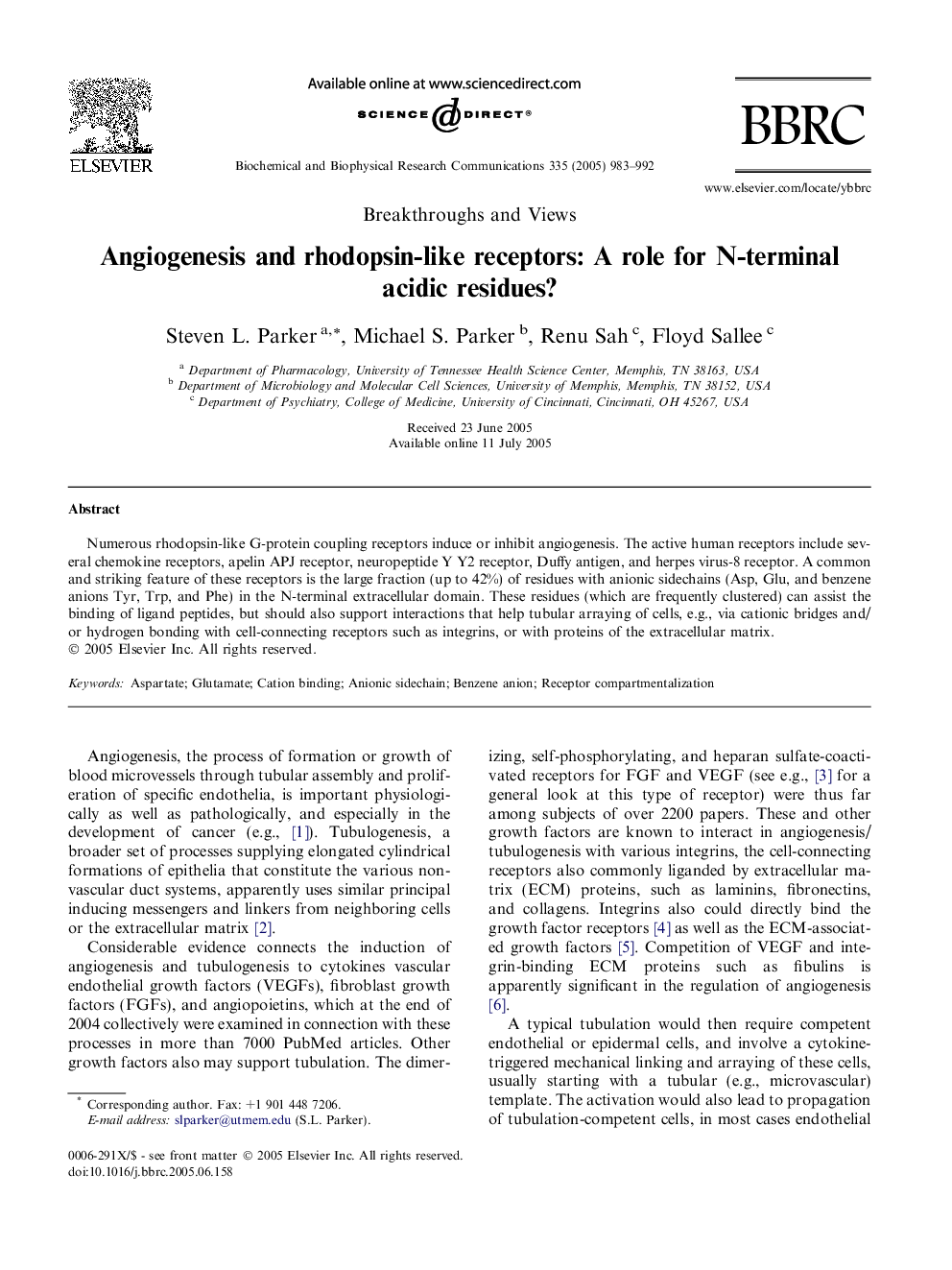| Article ID | Journal | Published Year | Pages | File Type |
|---|---|---|---|---|
| 10768428 | Biochemical and Biophysical Research Communications | 2005 | 10 Pages |
Abstract
Numerous rhodopsin-like G-protein coupling receptors induce or inhibit angiogenesis. The active human receptors include several chemokine receptors, apelin APJ receptor, neuropeptide Y Y2 receptor, Duffy antigen, and herpes virus-8 receptor. A common and striking feature of these receptors is the large fraction (up to 42%) of residues with anionic sidechains (Asp, Glu, and benzene anions Tyr, Trp, and Phe) in the N-terminal extracellular domain. These residues (which are frequently clustered) can assist the binding of ligand peptides, but should also support interactions that help tubular arraying of cells, e.g., via cationic bridges and/or hydrogen bonding with cell-connecting receptors such as integrins, or with proteins of the extracellular matrix.
Keywords
Related Topics
Life Sciences
Biochemistry, Genetics and Molecular Biology
Biochemistry
Authors
Steven L. Parker, Michael S. Parker, Renu Sah, Floyd Sallee,
